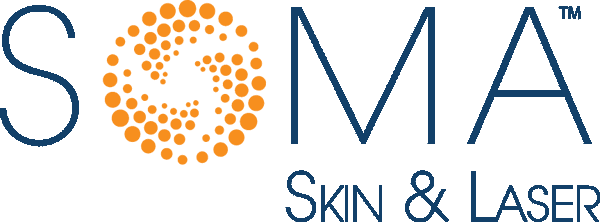Photodynamic Therapy (PDT) in Dermatology
Revolutionizing Skin Care with Photodynamic Therapy
Photodynamic Therapy (PDT) is an innovative, non-invasive treatment that has become a powerful tool in dermatology. By combining a photosensitizing agent with light exposure, PDT effectively targets and treats a wide range of skin conditions. From acne and actinic keratosis to skin rejuvenation, warts, and onychomycosis, PDT offers a versatile and effective approach to skin health.
How Does PDT Work?
PDT works through a two-step process:
Photosensitizing Agent Application:
- A photosensitizing agent, such as 5-aminolevulinic acid (5-ALA), is applied to the skin or nails. This agent is absorbed by abnormal or damaged cells, making them sensitive to light.
Light Activation:
- The treated area is exposed to a specific wavelength of light, which activates the photosensitizing agent. This activation produces reactive oxygen species (ROS) that selectively destroy the targeted cells, allowing the skin or nails to heal and regenerate.
Applications of PDT in Dermatology
PDT is used to treat a variety of skin and nail conditions, offering a safe, effective, and minimally invasive option for patients.
- Effective Against Acne: PDT is highly effective in treating moderate to severe acne, especially in cases resistant to conventional therapies. The treatment targets and reduces P. acnes bacteria, decreases sebum production, and shrinks sebaceous glands, leading to a significant reduction in acne lesions.
- Improves Skin Texture: PDT also helps reduce inflammation and improve skin texture, providing an overall smoother complexion.
- Prevention of Skin Cancer: Actinic keratosis (AK) is a precancerous condition caused by sun damage. PDT effectively treats AK by targeting and destroying the damaged cells, significantly reducing the risk of progression to squamous cell carcinoma.
- Minimal Scarring: PDT offers a less invasive alternative to surgical procedures, with minimal scarring and downtime.
Skin Cancer (Superficial Non-Melanoma):
- Basal Cell Carcinoma (BCC) and Squamous Cell Carcinoma (SCC): PDT is used to treat superficial forms of non-melanoma skin cancers, such as BCC and SCC, by selectively destroying cancerous cells while preserving healthy tissue.
- Outpatient Procedure: As a non-surgical, outpatient procedure, PDT offers a convenient and effective treatment option with minimal discomfort.
- Anti-Aging: PDT is used for skin rejuvenation, targeting fine lines, wrinkles, and sun damage. The treatment stimulates collagen production and improves skin tone and texture, resulting in a more youthful, radiant appearance.
- Safe and Non-Invasive: PDT provides a non-invasive alternative to more aggressive anti-aging treatments, with minimal downtime and long-lasting results.
- Resistant Wart Treatment: PDT is particularly effective for treating warts that have not responded to traditional treatments. By targeting wart tissue at the cellular level, PDT promotes the natural shedding of warts without the need for invasive procedures.
- Reduced Scarring: PDT minimizes the risk of scarring, making it an excellent option for warts in visible or sensitive areas.
Onychomycosis (Fungal Nail Infections):
- Effective Treatment for Nail Fungus: PDT is an emerging treatment for onychomycosis, a common fungal infection of the nails that can be difficult to treat. The photosensitizing agent penetrates the nail plate and targets the fungal cells, destroying them upon light activation.
- Minimally Invasive: Unlike oral antifungal medications, which can have systemic side effects, PDT is a localized treatment that directly targets the infection with minimal risk of adverse effects.
- Improvement in Nail Appearance: Over time, PDT can help clear the fungal infection, leading to healthier, clearer nails.
Rosacea:
- Reduction of Redness and Inflammation: PDT helps reduce the redness and inflammation associated with rosacea, providing relief from symptoms and improving the appearance of the skin.
Why Choose PDT?
- Non-Invasive and Safe: PDT offers a non-surgical option for treating a variety of skin and nail conditions, with a proven track record of safety and efficacy.
- Minimal Downtime: Most PDT treatments require minimal recovery time, allowing patients to return to their normal activities quickly.
- Versatile Applications: From acne and actinic keratosis to onychomycosis, skin cancer, and rejuvenation, PDT is a versatile treatment that can address multiple dermatological concerns.
Is PDT Right for You?
PDT is suitable for a wide range of patients and can be tailored to meet individual needs. Whether you’re dealing with acne, sun damage, onychomycosis, or skin cancer, PDT offers an effective, minimally invasive treatment option that promotes healthy, rejuvenated skin and nails.
Discover the Benefits of Photodynamic Therapy
If you’re interested in learning more about how Photodynamic Therapy can help you achieve healthier skin and nails, contact us today to schedule a consultation. Our experienced dermatologists will guide you through the process and determine if PDT is the right treatment for your dermatological concerns.
Call 973-763-7546 for a PDT consultation.
